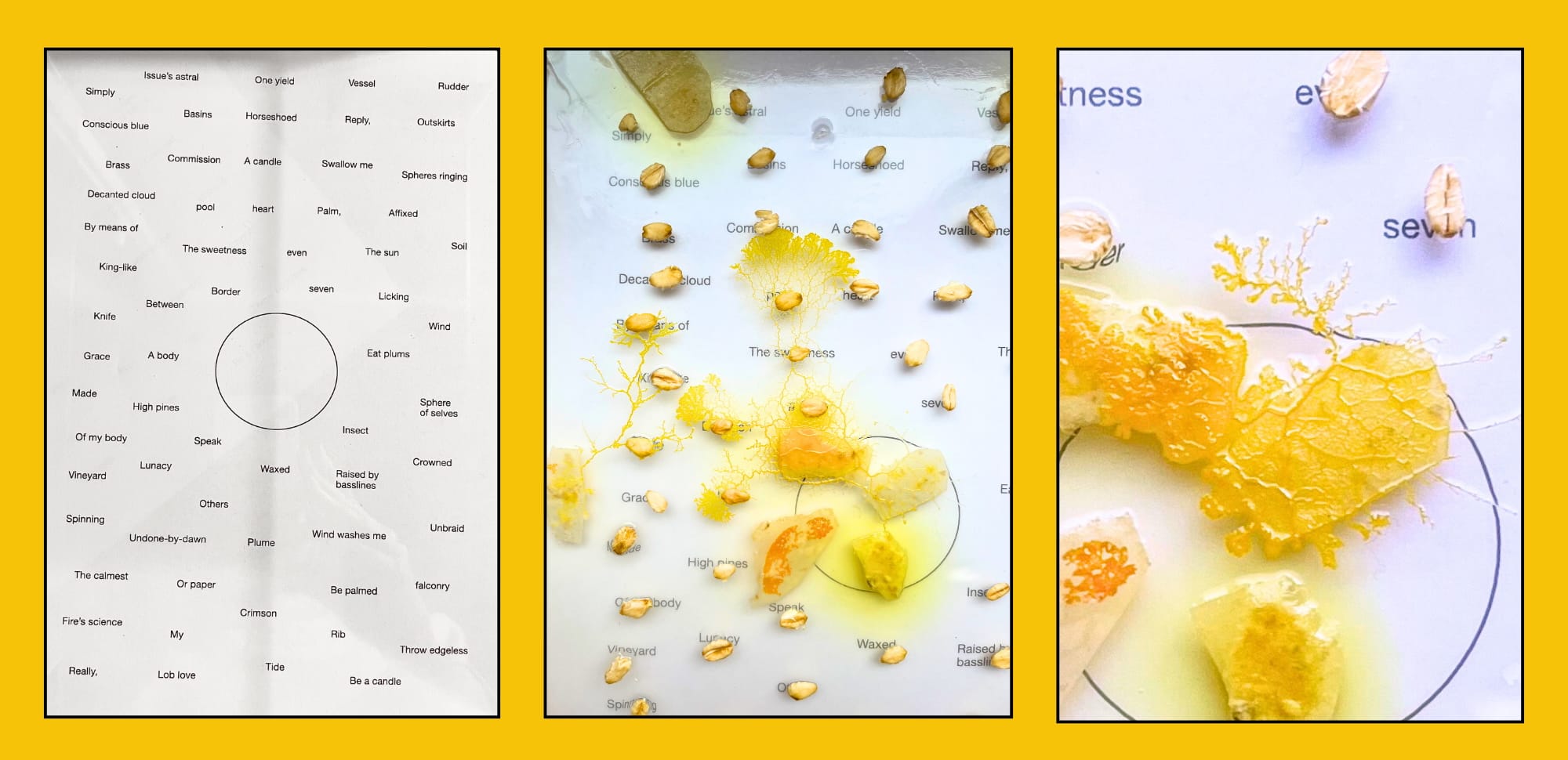Experimental Visionary Lyra Pramuk Breaks Down 7 Perfectly Produced Songs
The Berlin-based artist talks about favorites by Björk, Ennio Morricone, and Andy Stott, and explains how she collaborated with slime mold on her generative new album, ‘Hymnal.’

The Producers is an interview series where our favorite producers discuss their favorite music production.
During the improvisational vocal sessions for her new album, Hymnal, Lyra Pramuk would stand on the balcony of the remote wooden house in Italy where she was recording, and cry. Her view took in the sublime Dolomite mountains, which have been ravaged by climate disaster: In 2018, an extreme storm razed 14 million trees in the area, many of which had stood there for centuries. As she gazed over the scattered remaining pines still rooted into the mountains’ soft rock, she considered the ongoing destruction of the natural world due to human cruelty, and was overwhelmed with emotion.
“The mountains are literally scarred, and I have a lot of scars from surgeries that I’ve had as a trans person, so I felt connected to the land in this very deep way,” she explains from her home in Berlin. “Our arrogance as a society has caused me pain that is also causing these mountains devastation in other ways, and just to be with that, you sing very differently. The Dolomites are so ancestral, you can’t help but feel very small in their presence, and I wanted human beings to feel small on this album.”
For Pramuk, the particular location was a key part of her production process for Hymnal, which she wrote and composed in its entirety. As a classically trained musician, a virtuoso electronic artist, and a viscerally affecting singer, Pramuk carries the intentional fortitude of an academic alongside the unbridled anguish of an operatic diva. The 34-year-old considers production an act of transmission that is at once sonic, visual, sculptural, spatial, political, and intellectual. Hymnal’s themes include experiencing the human soul in the context of nature in our time of existential grief, an idea that helped guide how the album sounds and moves. “There needs to be a strong conceptual and emotional foundation for the work, which is the more philosophical, spiritual, hashtag-Rick Rubin side of production,” she says. “It’s very much like feeding back the shit of the world into artistic form—that feels like a responsibility right now.”
Pramuk’s 2020 breakthrough, Fountain, was an experimental-pop fantasia as well as a technical feat. That album was entirely made up of Pramuk’s own voice, which she looped, layered, stretched, twisted, pitched, and molded into a revelatory new type of wordless a cappella music. Her voice is still all over Hymnal, though it’s often working in tandem with—and sometimes overshadowed by—the sounds of Berlin’s Sonar Quartett, whose playing gives the album a folkloric permanency. After recording everything, Pramuk filtered the material through her CDJs, teasing out its hypnotic rhythms. This is music that encapsulates the treacherous state of modern humanity while sounding as if it were somehow made both 200 years in the past and 200 years in the future.
Along with the headier aspects of her production, Pramuk also gives considerable thought to the technical side: What kind of microphones should she use? How many? How will those mics be mixed? “I feel quite laboratory-doll in my approach—there’s a lot of testing, discovery, taking notes, trial and error,” she says. “That’s mixed with a guided process of intuition and somatic experiencing, just being a music lover and someone who’s obsessed with art and sound. Is this hitting for me? If it’s not, I need to keep laboratory-ing.”
The album’s wildest experiment involved collaborating with an entity you might actually find in a science laboratory: slime mold. Looking to work with language more on Hymnal, Pramuk enlisted her friend Nadia Marcus to write poems for the album—but she didn’t want to just sing them. So she asked another friend, the biological artist Jenna Sutela, to help her acquire slime mold and let the mold choose the words she would vocalize. “We made something like a bingo board with a few key phrases from the poems, and put the slime mold in each corner and let them grow over the board,” Pramuk says. She took photos of the board for seven days, tracking the mold’s path, and then created a visual map that she used for her vocal sessions. “I was limited to go only in the direction that the slime mold went, and only to adjacent words,” she says. “It was like a randomized limitation system, and a collaboration with this incredible creature.”

When asked what kind of imagined place Pramuk wishes to evoke with Hymnal, her answer feels both extemporaneous and deeply considered. “It’s some kind of amoebic, multiversal, mega-polyhedron, time-lapse, surreal deep-dream interpolation of the entire Earth and surrounding cosmos,” she offers with a smile, aware of her ambitions but unafraid to dim them. Many of her favorite musical productions are similarly evocative of specific moods or locales—sounds that transport you. Pramuk chose to talk about particular songs that act as microcosms of their corresponding albums. Her list includes all-time icons, undervalued pioneers, and underground revolutionaries, offering a skeleton key to further understand Pramuk’s singular sound.





